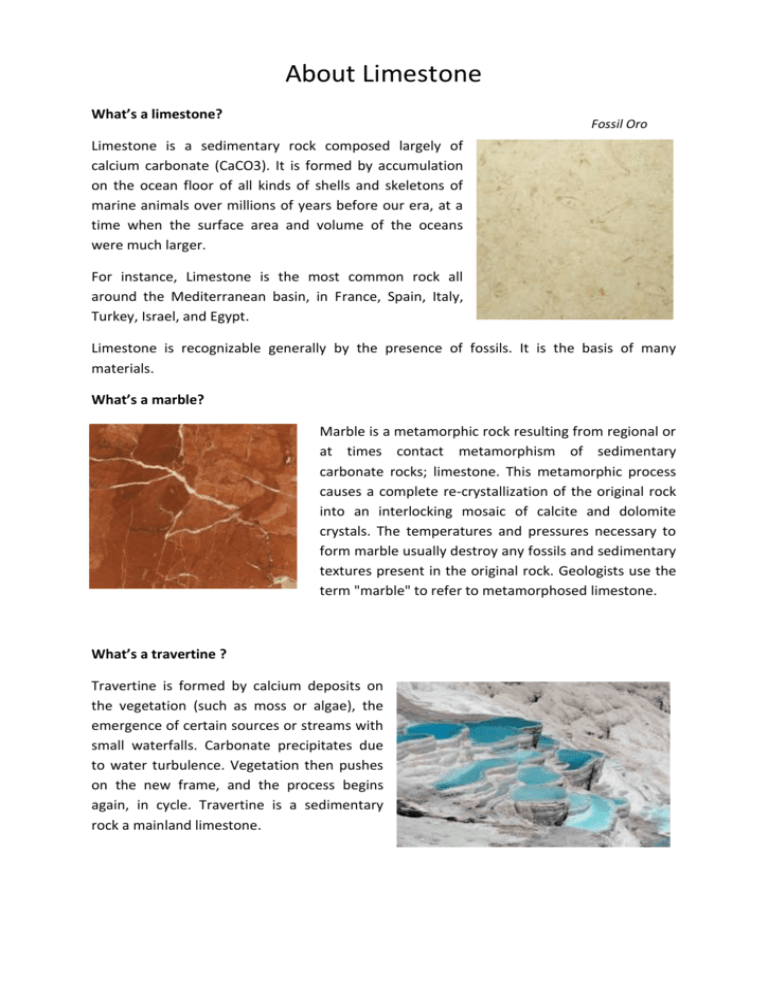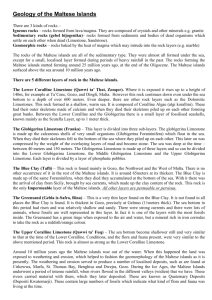- Haussmann Stone
advertisement

About Limestone What’s a limestone? Fossil Oro Limestone is a sedimentary rock composed largely of calcium carbonate (CaCO3). It is formed by accumulation on the ocean floor of all kinds of shells and skeletons of marine animals over millions of years before our era, at a time when the surface area and volume of the oceans were much larger. For instance, Limestone is the most common rock all around the Mediterranean basin, in France, Spain, Italy, Turkey, Israel, and Egypt. Limestone is recognizable generally by the presence of fossils. It is the basis of many materials. What’s a marble? Marble is a metamorphic rock resulting from regional or at times contact metamorphism of sedimentary carbonate rocks; limestone. This metamorphic process causes a complete re-crystallization of the original rock into an interlocking mosaic of calcite and dolomite crystals. The temperatures and pressures necessary to form marble usually destroy any fossils and sedimentary textures present in the original rock. Geologists use the term "marble" to refer to metamorphosed limestone. What’s a travertine ? Travertine is formed by calcium deposits on the vegetation (such as moss or algae), the emergence of certain sources or streams with small waterfalls. Carbonate precipitates due to water turbulence. Vegetation then pushes on the new frame, and the process begins again, in cycle. Travertine is a sedimentary rock a mainland limestone. When pure it is white in color, but most often the dominant color tends toward gray, yellowish, reddish or brown, depending on the impurities. This rock can indeed have small cavities called (vacuoles) that are unevenly distributed. What’s an Igneous Rock? The oldest type of all rocks is the igneous rock. Deep inside the earth, the temperature is very high and the minerals there are in liquid form called magma. As the magma pushes towards the earth's surface, it starts to cool and turns into solid igneous rock. All igneous rocks do not cool the same way. Some cool slowly, deep under the earth's surface. These are called intrusive igneous rocks. The slow cooling formS rocks with large crystals. Granite is an example of a rock that cooled slowly and has large crystals. Other rocks formed when the magma erupted from a volcano or reached the earth's surface through long cracks. Magma is called lava when it reaches the earth's surface. Lava cools quickly and forms rocks with small crystals. They are called extrusive igneous rocks. Basalt is an example of this type of rock. What are the differences between these stone? Limestone, marble and travertine have the same chemical properties but they have different physical properties. They are all sensitive to acid unlike granite and Lava yet they vary greatly in density and porosity. Limestone is the only stone where you can see fossils. Marble has in general a lot of veins. Travertine on the other hand has small cavities.









